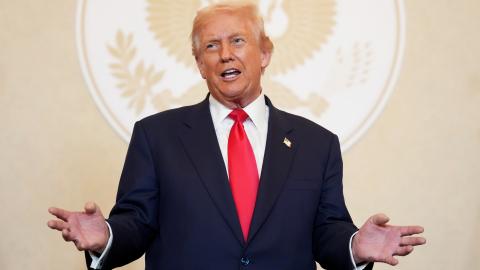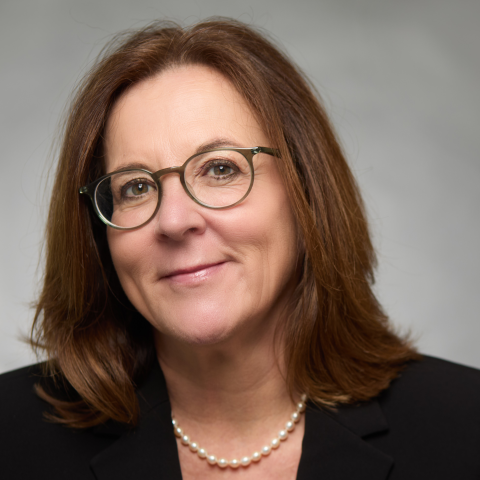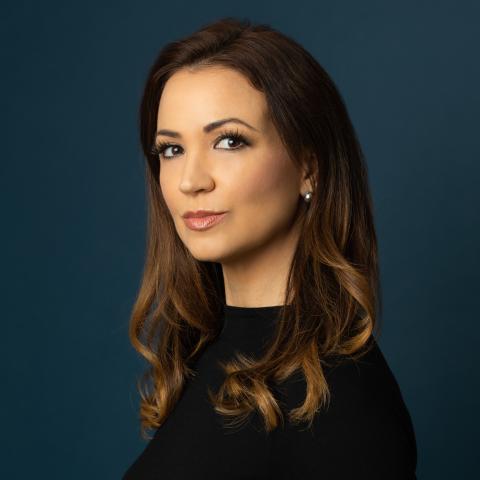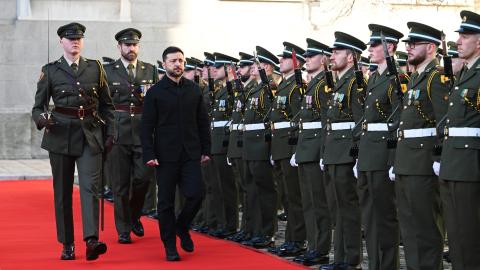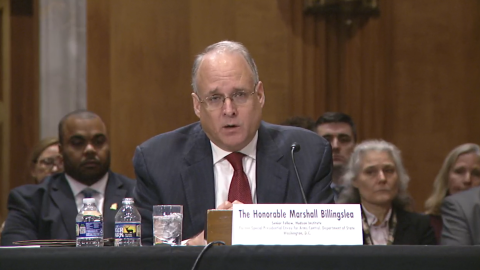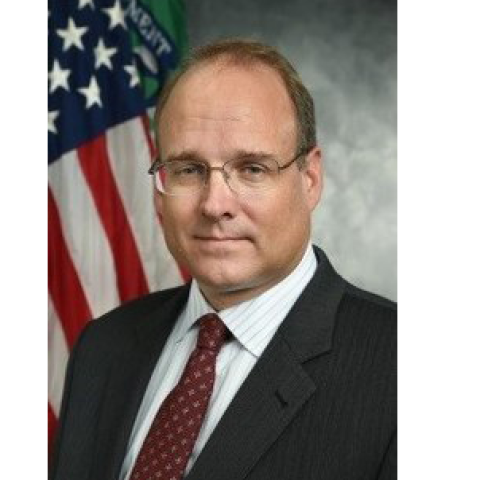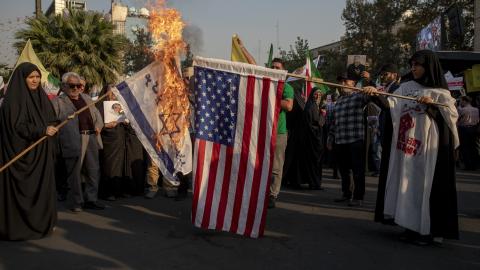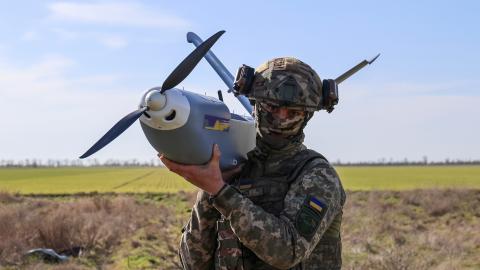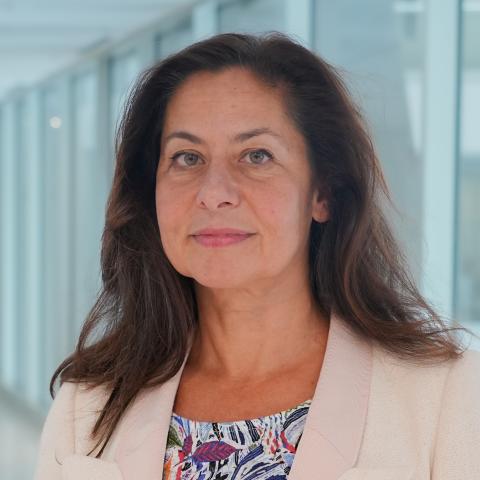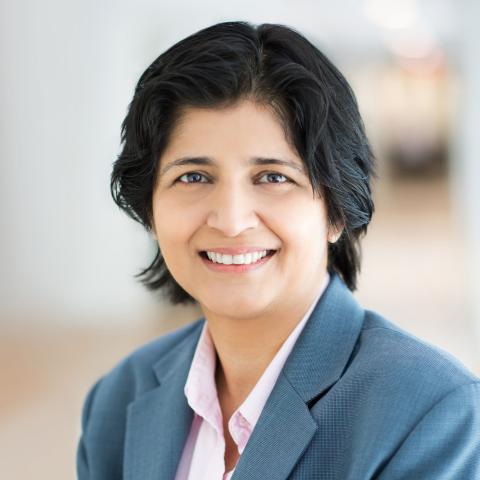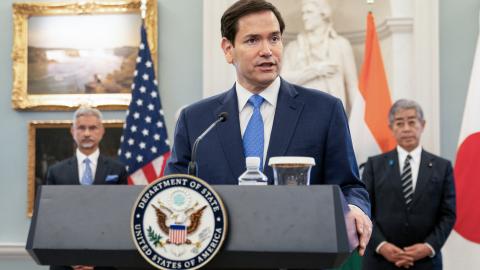The Quadrilateral Security Dialogue, or the Quad, is the centerpiece of U.S. Indo-Pacific diplomacy, but contrary to the desire of American strategic planners, it is far from being the lynchpin of regional security. The Quad brings together three Asian democracies – Australia, India, and Japan – and the resident external power, the United States. It is an ad hoc nonsecurity grouping that has retained attention even though the second Trump administration views multilateralism, multilateral institutions, and security alliances with suspicion.
The United States is recalibrating its global involvement based on selective hard power considerations. The Quad, however, is not yet a hard power actor. In his confirmation hearing in January 2025, Secretary of State Marco Rubio delineated the second Trump administration’s policymaking priorities based on three questions: “Does it make America safer? Does it make America stronger? And does it make America more prosperous?”
The Quad has, so far, not made the U.S. safer, stronger, or more prosperous. But the administration continues to see it as important, primarily because of its potential in containing China’s rising power and influence. The Quad countries encompass over 2 billion people and together account for one-third of global gross GDP; their combined efforts would go a long way toward countering China.
Quad’s Origins
The Quad was first forged, informally, in the wake of the 2004 Indian Ocean earthquake and tsunami when Australia, India, Japan, and the United States coordinated to mobilize humanitarian assistance and disaster relief across the region. Three years later, in 2007, the idea of the Quad as a standing group was conceived, with late Japanese Prime Minister Abe Shinzo pitching the concept of these four democracies working together to strengthen regional stability based on shared norms and interests.
After a fizzling out in 2008, the Quad grouping was resuscitated in 2017 under the first Donald Trump administration, amid growing concerns about China’s aggressive economic and military expansion in the region. The subsequent Biden administration then further elevated the Quad, adding annual leader-level summits to the existing foreign ministers’ dialogue. Both the frequency of annual meetings and the breadth of agenda items significantly expanded.
If the goal was to create an Indo-Pacific mini lateral, the Quad can be counted as a success. In under a decade, the four countries have enhanced cooperation beyond humanitarian assistance and disaster relief (HADR) into health security, debt management, regional connectivity and infrastructure, critical and emerging technologies, and maritime security.
If, however, the aim was to create a mini lateral that counters China’s increasingly assertive posture in the Indo-Pacific, the Quad has a long way to go.
Quad's Evolution and Achievements
Starting with the first Trump administration, the Quad has been central to the foreign and security policy of three successive presidential administrations. While China's rise was the most immediate unifying concern, the Quad's revival under Trump
1.0 reflected broader systemic shifts in geopolitics. Since the end of World War II, U.S. grand strategy has rested on building a network of alliances across the globe, especially maritime Asia, currently referred to as the Indo-Pacific. The economic and military rise of China poses a challenge to this global security architecture.
The first Trump administration's shift from the Obama administration's "Asia-Pacific" framing to "Indo-Pacific" was more than semantic - it reflected a strategic recalibration to
incorporate the Indian Ocean region as part of a larger global perspective on Asian security. Under Trump 2.0, however, the phrase "Asia-Pacific" has reappeared.
In June, for example, in a tweet responding to news that that two Chinese aircraft carriers had been spotted conducting simultaneous operations in the Pacific, U.S. Under Secretary of Defense for Policy Elbridge Colby tweeted: "This is why @SecDef at Shangri-La stressed so strongly the importance of Asia-Pacific allies dramatically stepping up their defense spending." Colby's post referenced not "Indo-Pacific allies," but "Asia-Pacific allies." Countries in the region, including China, have taken note of this shift.
With the first Trump administration's skeptical view of multilateral institutions, and traditional alliances, there was a preference for smaller focused groupings. The Quad, with its ad hoc nature, flexibility, and alignment between democracies, fit perfectly within this vision, as was reflected in the 2017 National Security Strategy. However, the Quad was framed not as a security construct but a values-based grouping of like minded democracies that shared a commitment to a "free and open Indo-Pacific."
Following on the heels of an administration that was skeptical of alliances and allies, the Eiden administration saw as its primary objective in reinforcing and strengthening global alliance and partnership networks. Understanding that it was no longer possible to build new large security alliances, like during the Cold War, the Eiden administration turned to minilateral groupings as adaptive tools to reinforce traditional security alliances.
The Eiden administration, however, maintained the first Trump administration's view of China as a peer competitor, and this cemented the centrality of the Indo-Pacific in the administration's national security strategy. Within the Indo-
Pacific, the Quad's prominence was elevated both at the symbolic and substantive levels. At the symbolic level, the Biden administration organized the first-ever Quad leaders' summit in 2021. Over the course of the next four years, the Quad leaders met six times, four of which were in-person meetings.
On the operational front, there was a spurt of both activities and growth in areas of cooperation. The Quad's origins lie in HADR, and that remains a core area. Over the years, the Quad countries have established guidelines that assign roles and responsibilities to member countries when responding to disasters and pre-positioned essential relief supplies across the Indo-Pacific, facilitating quick mobilization in disaster-prone areas. This support is a way of demonstrating to regional countries that unlike China-which seldom extends such generosity - the Quad partners are committed to tangible delivery.
The COVID-19 pandemic demonstrated the need for capacity building in healthcare and for building resilient supply chains. The Quad countries took on this challenge and over time converted their pandemic cooperation - namely vaccine production and distribution - into a broader partnership focused on building resilient health infrastructure and ensuring pandemic preparedness. China-U.S. strategic competition, which deepened further following the pandemic, has ensured the need for resilient supply chains in key sectors like critical minerals, energy, and technologies. The Quad's focus has been not just to ensure these for their own citizens but also build the technical capacities of Indo-Pacific countries.
Regional connectivity and infrastructure, whether digital or physical, is critical to countries across the Indo-Pacific. The high cost of infrastructure investment and lack of access to low interest loans from multilateral financial institutions are key reasons for the participation of 147 countries in China's Belt and Road Initiative (BRI). Even though the Quad flagged infrastructure building and debt sustainability as priorities, none of its participating countries has mobilized resources at a scale that rivals China's.
In October 2025, the Quad Ports of the Future Partnership is expected to be launched in India. The stated aim of the initiative, which seeks to mobilize public and private sector investment, is to provide the region with an alternative when it comes to building quality port infrastructure. If the Quad truly seeks to become a credible alternative to China for smaller countries of the Indo-Pacific region, it will need several such initiatives backed by serious economic heft.
As maritime countries situated in the Indo-Pacific's four corners, maritime security cooperation is often touted as the cornerstone of the Quad. Countries across the region lack the capacity to monitor illegal fishing, track foreign ships, and respond to humanitarian disasters. The Quad's response is the Indo-Pacific Maritime Domain Awareness (IPMDA) initiative, which tracks commercially available data and shares this information through fusion centers located in India, Singapore, Solomon Islands, and Vanuatu. In 2024, to ensure that smaller countries know how to use this data, the Quad also launched a regional Maritime Initiative for Training in the Indo-Pacific (MAITRI).
In May 2025, the Quad countries launched the Quad Indo Pacific Logistics Network (IPLN). The initiative seeks to leverage the logistics capabilities of partner countries to enable them to respond to any natural disasters more quickly and efficiently than before. Together with the IPMDA, the IPLN reflects the Quad's commitment to ensuring a free and open Indo-Pacific and highlights the value of strengthening practical cooperation to address regional challenges.
In July 2025, the four partners launched the Quad-at-sea Ship Observer Mission deploying coast guard observers from each country on board U.S. Coast Guard Cutter Stratton, operating in the Indo-Pacific. The mission seeks to build upon existing initiatives to enhance maritime domain awareness, deepen operational coordination, and enhance joint readiness among the Quad nations' coast guards.
And yet, these initiatives fall short of achieving their main aim: projecting genuine hard power to deter China's actions.
Trump 2.0
Six months into the second Trump administration there are divergent impulses vying with each other in the geopolitical and geoeconomic ecosystem. China remains the peer competitor and there remains, by and large, a strong push within the administration to halt China's economic and technological rise. This, however, must reckon with the strategic imperatives of an "America First" approach that seeks to rebuild the U.S. civilian and military industrial base and pull back from most global commitments.
The Indo-Pacific strategy, and the Quad minilateral, align with the former objective, but run counter to the latter.
A key principle of the second Trump administration is its focus on hard power deliverables, namely economic and military power. Any policy or any grouping that the United States is a part of will be measured from the lens of what it delivers on these fronts. This is consistent with the central tenet underlying the policies of the second Trump administration that the U.S. is not -and must no longer be - the world's default policeman.
The Quad countries comprise some of the leading economies of the world and they have close bilateral economic ties. However, the Quad has long lacked a formal economic pillar through which its members could systematically deepen regional economic engagement. While the July 2025 streamlining of the
Quad has included an economic security theme, it will face structural headwinds. Bilateral relations cannot be divorced from mini- or multilateral ones. The fractious bilateral tariff and trade negotiations that are currently going on between the
U.S. and every country, including the Quad countries, will make it politically and economically tougher to do more in this arena.
On the security and military front, the Quad countries participate in several bilateral and multilateral military exercises. The annual Malabar exercise, currently limited to the four Quad countries, faces interoperability challenges and has yet to be formally designated as the official Quad exercise. The reluctance to publicly signal to Beijing, at a time when China has dual-use ports across the Indian and Pacific oceans, is puzzling to say the least.
If China's military aggression is truly a concern for all four countries, then more joint military activities under the Quad rubric are needed. With China outspending three of the four Quad countries in the defense realm, enhanced security cooperation between the Quad countries is essential to project a credible hard power signal to China.
At the symbolic level, the Quad has done well in the first six months of the second Trump administration. A Quad Foreign Ministers Meeting was held on January 21, the day after Trump's second inauguration. Six months later, a second Foreign Ministers Meeting was held on July 2. In May, at the leading Indo-Pacific defense forum, the Shangri-La Dialogue,
U.S. Secretary of Defense Pete Hegseth promised amplified cooperation with the Quad, focusing on the logistics and interoperability arrangements. In addition, Trump is scheduled to attend a leader-level summit to be held in India later this year.
At the substantive level, the imperatives driving the Trump administration are increasingly discernible. Under the Biden
administration a proliferation of initiatives unfolded under the Quad rubric. At the most recent Foreign Ministers Meeting, it was clear that a consolidation of these was being undertaken - an attempt to streamline efforts and lend coherence to the agenda. The pre-existing 15 working groups were placed under four broad themes that cover maritime and homeland security, humanitarian assistance and disaster relief, tech security, and economic security. These reflect the clear preference of an administration that seeks to emphasize concrete hard power deliverables - prioritizing operational capability over symbolic gesture.
Going back to the first Trump administration there has been a demand for burden sharing, though initially confined to the defense domain and directed chiefly at formal security allies. Under the second Trump administration, the impulse for burden sharing appears to be broadening into the economic realm as well. The Quad's advantage was that since it originated as a collaborative endeavor, there is built-in burden sharing but it is limited to the public goods arena. Each member of the Quad has allocated funds for activities over the last few years, and there has been no overdependence upon American largesse. However, doubts over U.S. interest and support remain a constant undercurrent to the Quad, just as they do any other U.S.-led mini or multilateral grouping.
There are several U.S.-led minilaterals and initiatives that seek to help build regional connectivity and aid countries in building up their infrastructure. However, none of them has been able to counter China's BRI, in scale, resources, or symbolism. The Quad was conceived as a deterrent to China not just at the symbolic but also at the substantive levels. The Quad was to offer an alternative to countries in the Inda-Pacific when it came to China's BRI through HADR, infrastructure and capacity building, and maritime security. The Quad was also seen as helping counter China's technological dominance by bringing
together four countries that had the manpower and skills to challenge China.
And finally, the Quad was meant to signal to China that the U.S. was keen to remain a resident power in the region, and it would support its friends and partners against any military aggression by China. Realizing this vision would require the Quad to build interlinkages - economic, tech, and military - between the four partner countries and countries across the entire Indo-Pacific region. That level of integration, however, remains aspirational.
Further, the rethinking of existing alliances and commitments being undertaken by the second Trump administration will cast a shadow over bilateral ties - reverberations that will inevitably shape the Quad's trajectory. The announcement that the administration is rethinking the AUKUS treaty has not gone down well in Canberra, raising fresh doubts about the durability of U.S. security assurances. The testy trade and defense burden-sharing negotiations with Tokyo have resulted in a postponement of both a trade agreement to avoid Trump's "reciprocal tariffs" and the annual 2+2 dialogue. The Trump administration's response to the India-Pakistan clashes of April May 2025 and frequent references to an U.S. role in the ceasefire, conflation with trade negotiations, and the renewed
U.S. engagement with Pakistan, have rekindled Indian skepticism about a transactional American foreign policy.
While HADR, logistics sharing, coast guard cooperation, and IPMDA are valuable for fostering bonhomie and camaraderie, the real synchronization of militaries occurs with deeper, institutionalized integration that is combat-oriented and ensures interoperability. One way of achieving interoperability would be synchronization of defense equipment. Australia and Japan have historically purchased heavily from the U.S.; India is the exception. In recent years India has started to purchase
more from the U.S. and other American allies like Israel and France.
However, the second Trump administration's skepticism toward traditional allies in the West and Europe have led many in Canada and Europe to talk about limiting defense purchases from the U.S. and instead pushing to indigenize. India, a country that has long preferred indigenization, is currently faced with a similar dilemma. For example, India needs fifth generation fighter aircraft and engines, and India's choices are U.S., Japanese, or indigenously produced. Whichever path India chooses will determine its military procurement trajectory over the next three decades. It will also have significant consequences for both bilateral ties and the broader multilateral military cooperation - including the future cohesion of the Quad.
Technology, often referred to as the "oil of the future," is essential to economic strength, military power, and overall hard power. Over the last two decades, China has moved from being a country that stole Western technology to being one of the key innovators. A key objective of successive U.S. administrations has been to stop China's tech rise and to provide an alternative to Chinese technology, especially to the Global South. The Quad countries understand this, as can be seen in their focus on critical and emerging technologies and building tech capabilities of countries in the region, all of which will now fall under the tech security stream. However, progress in this sphere must accelerate significantly beyond the current pace.
Right from the start, the Quad countries have sought to work across the Indo-Pacific. The July 2025 joint statement mentions Southeast Asia, the Pacific Islands, and the Indian Ocean region more broadly. However, there are other key geographies where Chinese influence needs to be countered. These include the Middle East, Central Asia and Africa, all of which matter to the Quad countries.
Finally, policy coordination is critical, and the Quad must remain focused on its core goal: deterring China or offering a credible alternative. For the second Trump administration it is important that tangible deliverables are visible for any engagement or dialogue, and this will have an impact on the bilateral and trilateral cooperation that had grown between Quad countries. Failure to deliver will drive member states toward unilateral projects, undermining the Quad's foundational cohesion and diminishing the scale and scope of collective endeavors. Any such gaps will create strategic openings that Beijing is poised to exploit
Geopolitics, like nature, abhors a vacuum. The second Trump administration seeks to pare down, redirect, or refocus its economic and military resources. And it expects its allies and partners to fill in any gaps that are created. The challenge, however, is that unless U.S. partners fill in the vacuum, China certainly has the resources and will to do so instead.
Conclusion
Two decades after the Indian Ocean tsunami and eight years after its resuscitation, the Quad has yet to build the hard power credentials to become more than what China dismissively called it in 2018: "sea foam."
The Quad's key dilemma is tied to its very foundation: it remains a partnership of four democracies that are among the world's leading economies and have considerable military power. The four countries are trading partners, conduct military exercises, and share similar security challenges. While all four profess strategic alignment, it often rings hollow in practice.
However, if the overarching goal is to provide an alternative to the China model and send a message of deterrence to China, then these bonds of trust need to be enhanced through economic investment and backed up through hard power.
Historically, India has publicly pushed back against the idea, and it is unclear if either Japan or Australia are keen about advancing such a shift under the current circumstances.
The Quad has survived and is likely to maintain continuity despite leadership transitions across its four member states. This is no small feat in today's fluid geopolitical environment. Yet, the frequency of summit meetings and proliferation of formats aside, the Quad still faces a significant gap between ambition and capability. Unless it acquires the capabilities to become the true deterrent to China's assertiveness, the Quad risks being viewed as more performative than transformational.
